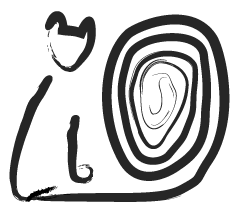This post is part of my series Keeping the Faith: Fostering Engaged Citizenship in the US.
- Part One: A Democracy in Crisis
- Part Two: It Doesn’t Have to be Like This — Practical Ways to Fix our Elections
- Part Three: Getting Off our Arses and Voting!
- Part Four: Too Busy to be the Public?
- Part Five: Civil Society
- Part Six: Internets in the Public Interest
- Part Seven: A Culture of Democracy
- Part Eight: Different Realities

My Mom and I sat down over the last two weeks and watched the Democratic National Convention and the Republican National Convention. The experience made it terrifyingly apparent just how different our realities are as Americans. Camp Red America might as well be on an alien planet from Camp Blue America. We live in alternate universes.
So much of what the Commission recommends is dependent on people of goodwill working together independently of their tribal partisan identities. But can that be done when our differences extend beyond even our identities and determine our fundamental perceptions? If we can’t agree on what is real, how can we agree on what to do about it?
That means that quite possibly, the most critical recommendation the Commission makes is to hammer out a national story we can all accept (6.2). But this can’t just be about history. Before we can even address the past, we need to generate a coherent, unified theory of us in the present. We flirted with this at the beginning of the pandemic, back before Dr. Fauci was politicized. But we couldn’t sustain it. It didn’t take long for our conflicting realities to reassert themselves.
That, then, begs the question; if an unprecedented national crisis can’t bring our worldviews together, what can?
When things transform as radically and drastically as they have in the US over the past 20 to 30 years, one must ask what changed? What is different now that might have led to this outcome? Since this has been a time of massive disruption, it’s easy to find phenomena to blame. It’s Facebook’s fault. The internet did it. The 24-hour news cycle brought us low. One can go on and on.
And one will be somewhat right. All of these factors, and so much more, have contributed to our situation. But I’m struck by one change in particular. The other day my Mom and I talked about the giants of news when I was growing up. Everyone knew who Tom Brokaw, Dan Rather, and Peter Jennings were. And during my Mom’s young adulthood, everyone knew Walter Cronkite, Chet Huntley, David Brinkley, and Edward R. Murrow.

These newsmen, and they were overwhelmingly men, had plenty of blind spots. The media was complicit in marginalizing people of color and women. The news of the day didn’t tell many important stories and didn’t report critically on a lot of other important stories.
Nevertheless, the anchors of the three big networks, between them, ensured that most Americans were getting the same information with a similar emphasis. Mom and I couldn’t think of a single person in the current mediascape who has that kind of broad-based authority and gravitas. Our fractured media landscape has opened the floodgates of differing ideas and opinions. In so doing, it has had the unintended consequence of creating conflicting realities.
I’m not sure we can begin to reconcile our realities without a common trusted news source.
That may be the recommendation the Commission forgot to make.
I don’t have an answer for how to reunite our worlds, but the Commission itself gives me hope. One can still find 35 heavyweight thinkers from across the ideological spectrum who share enough reality to have a rational conversation and find a consensus. They can even gather enough people interested in civil discourse to have nearly 50 listening sessions around the country. That has to be a good sign.
Now it’s really up to us. Emergency response training tells us that if something bad happens to someone, the impulse to step in and help varies with the number of witnesses. If you are alone with someone who suddenly experiences a seizure, you will probably help them. But if you are part of a crowd that witnesses the seizure, you (and all your fellow humans) will tend to think that someone else has got it, and not help.
Right now, there are 328.2 million witnesses to America’s convulsions. We’re all making the wrong assumption that someone else has got this. No one has it. It’s up to each of us to try to help. The Commission’s strategies and recommendations are a good place to start.
